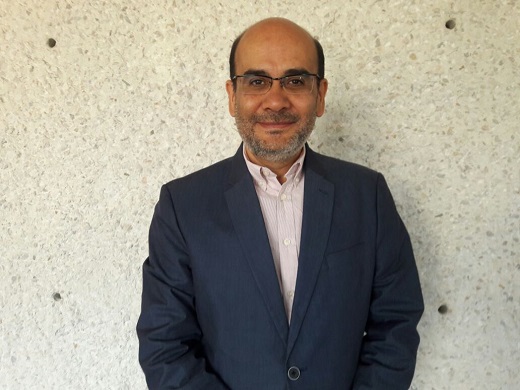The celebration of the International Day of Light provides us with a great opportunity to raise awareness about the importance of the culture of light, from the Association of Authors of Illumination -AAI- and the Professional Association of Lighting Designers -APDI-, we have invited leading creators from the fields of art, design, theatre, photography and architecture to share their views and opinions on this important initiative and on the role that light plays in their lives and professions.
THE LIGHT FOR
VICTOR PALACIO
- UNESCO has proclaimed 16 May as International Day of Light. What is your opinion of this initiative?
It seems to me a very positive initiative, UNESCO raised the issue of light to the highest level of international attention with the appointment of the International Year of Light in 2015 and now gives continuity and permanence with this proclamation to be celebrated year after year.
- How important is it to improve public understanding of the central role that light plays in our daily lives?
To the point where it is common to consider light as a highly relevant factor in every project and human activity. At the level of the general public, it is necessary to provide clear and precise information that allows understanding the role played by light without entering into areas of discussion and conflict. Public understanding” is a slippery slope, just look at how information is handled and propagated at that level. To give an example, just look at the alarm generated by the false idea that LEDs are a source of carcinogenic radiation, or that the light produced by them generates psychological disorders and health effects. At Lightfair, during this year, there will be talks aimed at lighting specialists who are now called to testify in trials where the possibility of lighting being the cause of some damage involving civil liability is on the table. Public opinion” is a devourer of bad news and bad omens; it hardly has the capacity to assimilate technical news even when it is to its benefit. Hence the celebration of the International Day of Light is a way to make a wake-up call and a statement about the importance of light, that is well received by the “public opinion”. To think that the general public can be educated and made aware of this role is not very realistic, but it is possible to send those concrete and brief messages that say “light is important”.
- What properties of light do you value most on a personal level?
I think the relationship between luminance and color temperature is of very high importance. The right combination of both factors determines the visual quality of the space and has a decisive influence on the visual performance. For example, a low and uniform luminance combined with a colour temperature of less than 3000 kelvin produces a warm and relaxing atmosphere, very conducive to a space of rest and tranquillity. In contrast, a high, localised luminance in combination with a colour temperature of 4100 kelvin stimulates activity and is suitable for a workspace.
- And on an artistic level? What role does light play in your work?
Art is present in everything we do, although it often goes unnoticed. The sensitivity we have to art, to a greater or lesser degree depending on each person, determines many of our decisions, especially if our work is in the field of design and even more so if it is in the visual field.
On the other hand, also when we talk about art, the concept that a speciality taken to its maximum level of creation is an art is implicit; if the question allows this context, I find it very interesting how lighting design has evolved from its very technical origin on the one hand – lighting engineering – and very artistic on the other – stage lighting – to now integrate both fields and other additional ones that influence its results, such as environmental impact, light pollution and the effects of light on human wellbeing. In this sense, lighting design, when executed flawlessly and achieving remarkable results, can aspire to become an art, the art of applying light with technical mastery, artistic sensitivity and awareness of its holistic impact.
- From your experience would you say that light is an art or a science?
It is a particular combination of science and art, it uses them to structure the way in which it approaches a problem and develops its solution. As a design discipline, the application of light requires an understanding of a body of scientific knowledge that provides the framework for developing a technique. At the same time, it is necessary to develop an aesthetic sensibility that integrates a correct understanding of the subjective impact of the use of light. The integration of both perspectives allows the development of a balanced and consistent design process.
Victor Palacio is an architectural lighting designer and runs the firm IDEAS EN LUZ in Mexico City. He held the position of President of the IALD – International Association of Lighting Designers – in 2016 and 2017.
His experience of more than 20 years in lighting projects includes museums such as the National Museum of Anthropology, the National Museum of History, the Ex-Convent of Santo Domingo in Oaxaca and currently the Dolores Olmedo and Frida Kahlo museums; also public spaces such as the Plaza de la Concordia in Puebla, the Plaza de la República in Mexico City and the renovation of the Cineteca Nacional; historical and artistic monuments including temples in various cities and the Palacio de Bellas Artes; multiple projects for beach residences on the Pacific coast as well as retail projects for department stores and shopping malls.
He is a lecturer and has taught museography courses at the National Institute of Anthropology and History, the Master of Museums at the Universidad Iberoamericana and the Space and Illumination and Dilux diplomas. He will participate as a Speaker at the 1st International Day of Light Celebration at UNESCO Headquarters in Paris on May 16th.
Its design philosophy is to collaborate in the creation of unique lighting environments for the benefit of people.






